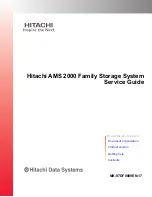
After an SP reboot, the SP clock is changed in these circumstances:
■
When the host is booted
. The host’s BIOS unconditionally sets the SP time to that indicated
by the host’s real time clock (RTC). The host’s RTC is set by the following operations:
■
When the host’s CMOS is cleared as a result of changing the host’s RTC battery or
inserting the CMOS-clear jumper on the motherboard. The host’s RTC starts at Jan 1
00:01:00 2002.
■
When the host’s operating system sets the host’s RTC. The BIOS does not consider time
zones. Solaris and Linux software respect time zones and set the system clock to UTC.
Therefore, after the OS adjusts the RTC, the time set by the BIOS is UTC.
■
When the user sets the RTC using the host BIOS Setup screen.
■
Continuously through NTP if NTP is enabled on the SP
. NTP jumping is enabled to
recover quickly from an erroneous update from the BIOS or user. NTP servers provide UTC
time. Therefore, if NTP is enabled on the SP, the SP clock is in UTC.
■
Through the CLI, ILOM web interface, and IPMI
Interpreting Event Log Time Stamps
Sun Fire X4640 Server Diagnostics Guide • December 2010, Rev A
32
Summary of Contents for SUN Fire X4640
Page 1: ...Sun Fire X4640 Server Diagnostics Guide Part No 821 0472 December 2010 Rev A ...
Page 8: ...8 ...
Page 22: ...22 ...













































